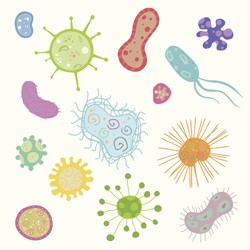Cheating and cooperation in bacteria
Evolution poses many examples of cooperation where the behaviour is costly to perform but benefits other areas. A classic example is that of social insect workers that do not reproduce themselves but put all their energies into rearing the young of the queen. The EU-funded PA_EXP_EVOL project turned its attention to one of the many examples of cooperation found in the microbial world, specifically the bacterium Pseudomonas aeruginosa. An opportunist, this microbe can cause infection in damaged tissue or when the immune system is compromised. Project scientists looked at the production of siderophores that can scavenge iron in an environment that may be low in the mineral. Siderophore production is a cooperative 'act' as the iron can be taken up by all microbes in the local growth area. Cheating was found more often in laboratory conditions than in natural habitats. Cheats are mutants that no longer produce siderophores but still continue to benefit from their production. Moreover, the team found that natural selection actually supports cooperation and acts against the cheats. This occurred as production of the siderophores was reduced when enough had been produced and this 'cost-saving' strategy minimised the ability of cheats to invade. One finding that may be of direct use in terms of a therapeutic avenue was that knocking out the ability of siderophore production profoundly affected virulence. Using the greater wax moth, knocking out the iron uptake pathways of the bacterium increased moth survival rate and decreased microbial growth. Interestingly, looking at generations of cheats and co-operators, both types adapted to each other's presence. Cheats became better at cheating by knocking out unnecessary metabolic pathways and co-operators became less vulnerable to cheating. Not only did they reduce their investment in cooperation, they also reduced mixing with cheats thus reducing the level of exploitation. It seems that the social life of a microbe is not so simple after all and demonstrates several significant points about evolution and adaptation to adversity. As a knowledge platform, the information on metabolic pathways can be applied to the control of infection.







